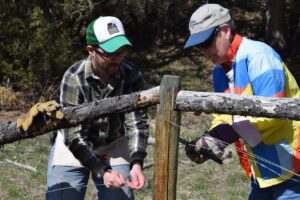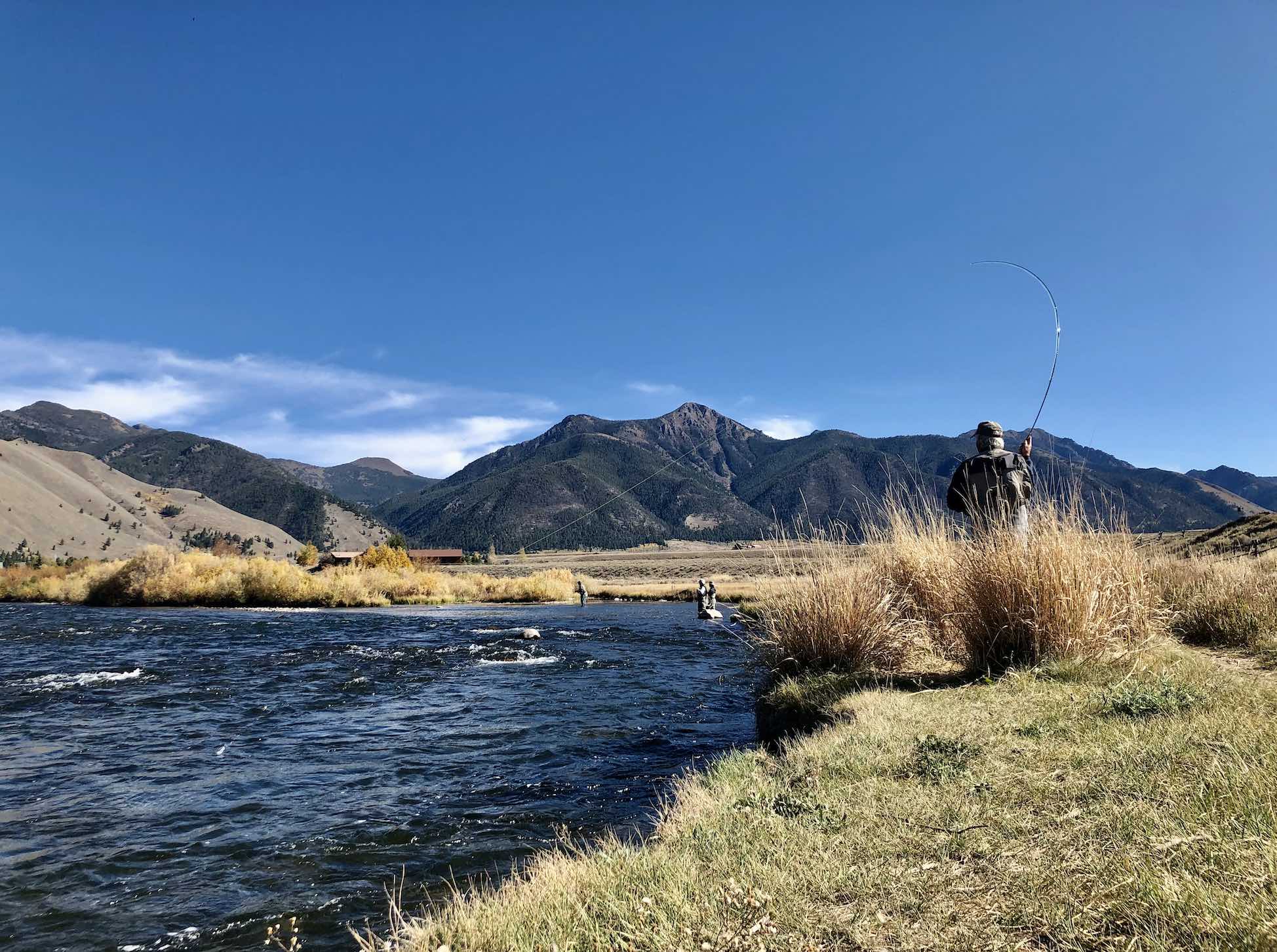Fence modifications bolster pronghorn population
By Amanda Eggert EBS Associate Editor
BOZEMAN – The Greater Yellowstone Ecosystem’s pronghorn—sometimes mistakenly referred to as antelope—have at least two notable second-place distinctions.
They are the world’s second-fastest land animals after cheetahs, and prior to European settlement pronghorn were one of the region’s most prolific land mammals, second only to bison.
But for all of the distance they can cover at speeds up to 60 mph, pronghorn are quite literally tripped up by fences.

“Pronghorn evolved way back in the Pleistocene [so] they’re used to unbroken habitat, just running for miles,” said Robb Krehbiel, a Yellowstone wildlife fellow with the National Parks Conservation Association who’s worked on pronghorn habitat improvement. “They’re runners, not jumpers.”
Unlike deer and elk, pronghorn—a faster North American ungulate than the true antelope species of Africa and Asia—generally prefer to crawl under fences rather than jump over them.
Aversion to fences becomes problematic when the pronghorn of Yellowstone National Park attempt to migrate north to lower elevation winter forage in Paradise Valley, or west toward Centennial Valley.
Some fences they encounter were installed long ago by land management agencies like the Custer Gallatin National Forest. Others belong to private landowners. But both hinder the movement of pronghorn, which have one of the farthest land migrations in North America.
Since 2010, the National Parks Conservation Association has worked with public land managers and private landowners to remove fences that are no longer needed, and to make necessary fences more wildlife-friendly.
Modifications typically go in one of two directions: raising the lowest wire so it’s 18 inches off the ground and replacing it with a smooth wire, rather than barbed; or dropping the top section of the fence so there’s less height for animals to clear.
Trina Smith, the guest services supervisor at the B Bar Ranch, worked with NPCA in Paradise Valley this past summer to remove one section of fence on a 20-acre plot south of Emigrant, and to lower fencing on a nearby parcel.
Under the new system, the top two wires can be dropped down and clipped in place to facilitate wildlife movement when cattle are grazing other pastures, and clipped back up to standard height when cattle are present.
Smith said the migrations tend to work well with their operation. Typically B Bar doesn’t graze cattle in that area—known as the Old Yellowstone property to distinguish it from the ranch’s larger spread in Tom Miner Basin—in the late fall and spring when pronghorn are traveling to and from winter forage.
During the summer, pronghorn eat their fill in the park and in Gardiner Basin, but by winter their survival often depends upon successful migration to lower pastures.
“Bison, elk and deer [also] graze [Gardiner Basin] all summer, and when you add a bunch of ice and snow on it, pronghorn are essentially digging through a freezer for leftovers,” Krehbiel said. “When that happens, their population crashes and they’re not able to sustain much more than 150, 180 individuals.”
But as they head north to Paradise Valley, pronghorn encounter a “pinch point” as they attempt to pass through Yankee Jim Canyon, a rocky and steep piece of topography dissected by the Yellowstone River.
By pinpointing their efforts on targeted sections of the landscape near Yankee Jim Canyon, NPCA has yielded outsized results.
Prior to their efforts, pronghorn were often getting hung up in Yankee Jim Canyon, but now they’ve successfully traveled as far north as Big Creek, nearly 10 miles from the canyon as the crow flies.
Krehbiel said the Yellowstone population has doubled since the project began in 2010. There are between 350 and 400 pronghorn in the park now—a significantly more sustainable number, but still markedly diminished from a historic standpoint. European settlement of the West resulted in habitat loss and unregulated hunting, which drove populations of pronghorn down significantly, much like bison populations.
Smith has noticed an increase in wildlife sightings since the modifications were made. “I have seen pronghorn further north than I have historically, and we’re in that corridor not far from Yankee Jim Canyon,” she said.
Erin Clark, the Yellowstone Program project manager with Ecology Project International, has been working with Krehbiel by supplying student volunteers. Last summer, 49 EPI volunteers from all over the country participated in fence projects for pronghorn conservation.
Clark said involving youth in conservation can be difficult because the process often happens on a long-term timeline and young people like to see immediate results. This project provides that—the fence that was there is now changed, or gone.
“That ends up being very powerful for them,” she said.














